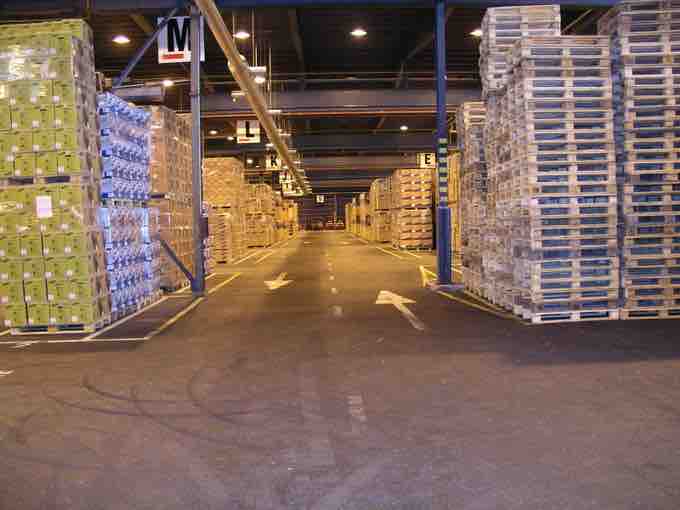A warehouse is a commercial building for storage of goods. Warehouses are used by manufacturers, importers, exporters, wholesalers, transport businesses, customs, etc. They are usually large plain buildings in industrial areas of cities and towns and villages. They usually have loading docks to load and unload goods from trucks. Sometimes warehouses are designed for the loading and unloading of goods directly from railways, airports, or seaports. They often have cranes and forklifts for moving goods, which are usually placed on ISO standard pallets and loaded into pallet racks. Stored goods can include any raw materials, packing materials, spare parts, components, or finished goods associated with agriculture, manufacturing, or commerce.
Some warehouses are completely automated, and require only operators to work and handle all the tasks. Pallets and products move on a system of automated conveyors, cranes, and automated storage and retrieval systems coordinated by programmable logic controllers and computers running logistics automation software. These systems are often installed in refrigerated warehouses where temperatures are kept very cold to keep product from spoiling, especially in electronics warehouses where they require specific temperatures to avoid damaging the parts, and also where land is expensive, as automated storage systems can use vertical space efficiently. These high-bay storage areas are often more than ten meters (33 feet) high, with some over 20 meters (65 feet) high. Automated storage systems can be built up to 40m high.
Warehouse management monitors the progress of products through the warehouse. It involves the physical warehouse infrastructure, tracking systems, and communication between product stations. Warehousing is critical in saving costs and timely order fulfillment, and today it is a vital part of supply chain management demand management. Even production management is to a great extent dependent on warehouse management. Efficient warehouse management gives a cutting edge to a retail chain distribution company. It should start at the container design stage of a product and not at the delivery of material in the warehouse.
Warehouse management systems often utilize Auto ID Data Capture (AIDC) technology, such as barcode scanners, mobile computers, wireless LANs and potentially radio-frequency identification (RFID) to efficiently monitor the flow of products. Once data has been collected, there is either a batch synchronization with, or a real-time wireless transmission to a central database. The database can then provide useful reports about the status of goods in the warehouse. A set of computerized procedures handle the receipt of stock and returns into a warehouse facility, model and manage the logical representation of the physical storage facilities (e.g., racking), manage the stock within the facility, and enable a seamless link to order processing and logistics management in order to pick, pack and ship product out of the facility.

A Warehouse
Inside Green Logistics Co., Kotka, Finland. The image shows goods loaded on pallets to the left of the aisle, and stacked pallets with no loads to the right of the aisle.